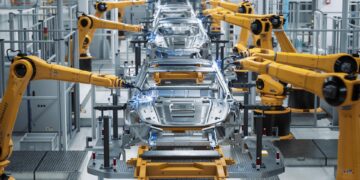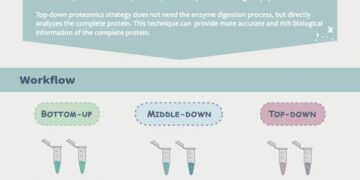In a groundbreaking experiment that has left scientists astonished, researchers have successfully demonstrated self-healing in a cracked piece of metal. This remarkable achievement, reported by ScienceAlert, challenges longstanding assumptions about the limitations of metallic materials and opens new avenues for advances in engineering and materials science. The finding not only pushes the boundaries of what metals can do but also promises transformative applications in industries ranging from aerospace to infrastructure.
Breakthrough in Self-Healing Metals Challenges Conventional Materials Science
In an extraordinary experiment that has captured the attention of materials scientists worldwide, researchers have successfully demonstrated a metal alloy’s ability to autonomously repair deep cracks without external intervention. This groundbreaking discovery defies the traditional understanding of metal fatigue and deterioration, which typically necessitates manual repair or replacement once damage occurs. The self-healing alloy relies on a novel combination of embedded microcapsules and reactive nanoparticles which, when a crack forms, trigger a chemical reaction that fills and solidifies the fissure, restoring structural integrity almost instantly.
The implications of this technology are vast, offering potential advancements in:
- Aerospace engineering – extending aircraft lifespan while enhancing safety.
- Infrastructure resilience – enabling bridges and buildings to self-repair minor damages and reduce maintenance costs.
- Consumer electronics – creating longer-lasting, more durable devices.
A comparative analysis highlights the alloy’s remarkable properties:
| Property | Traditional Metal | Self-Healing Metal |
|---|---|---|
| Crack Repair | Manual intervention required | Autonomous and rapid |
| Durability Over Time | Degrades steadily | Maintains >90% strength post-healing |
| Maintenance Frequency | High | Significantly reduced |
Inside the Experiment That Enabled Metal to Repair Its Own Cracks
Researchers devised a groundbreaking experiment involving a specially engineered metal alloy embedded with microscopic reservoirs of a healing agent. When the metal was intentionally cracked under controlled conditions, sensors and high-speed imaging captured the immediate release of the healing fluid from these reservoirs. This process initiated a chemical reaction at the fracture points, effectively sealing the cracks without any external intervention. The result was a restored structural integrity that baffled experts, as the metal appeared to regain its strength naturally-much like biological tissue repairing itself.
Key elements of the experiment included:
- Use of a self-contained healing liquid activated upon damage
- Advanced microstructure design to facilitate fluid flow to cracks
- Real-time monitoring of the healing process using digital microscopy
- Repeated crack-heal cycles demonstrating durability over time
| Aspect | Details |
|---|---|
| Material Composition | Nickel-based alloy with embedded capsules |
| Healing Agent | Liquid polymer precursor |
| Crack Propagation Speed | Up to 0.5 mm/s |
| Repair Time | Approximately 30 minutes |
Implications for Industry and Future Research Directions in Smart Materials
The breakthrough observed in the self-healing metal experiment opens a floodgate of possibilities for industries where durability and maintenance costs are paramount concerns. Manufacturing sectors such as aerospace, automotive, and civil engineering stand to benefit immensely by integrating smart materials that autonomously repair damage, thereby dramatically extending the lifecycle of components and reducing downtime. Moreover, the environmental impact could be significantly mitigated by lowering the need for frequent replacements and minimizing waste, aligning with growing sustainability initiatives across the global market.
Future research must focus on optimizing these materials for real-world applications, emphasizing scalability, cost-efficiency, and performance under diverse environmental conditions. Key areas for development include:
- Enhancing self-healing speed and repair completeness
- Integration with existing manufacturing processes
- Characterizing long-term durability post-healing
- Developing responsive materials adaptable to multiple damage types
| Research Focus | Potential Industry Impact | Challenges Ahead |
|---|---|---|
| Nanostructured Healing Agents | Faster recovery times in aerospace | Material integration & cost |
| Environmentally Responsive Polymers | Automotive self-repair coatings | Reliability in extreme conditions |
| Multi-Damage Detection Systems | Smart infrastructure monitoring | Sensor-material compatibility |
Key Takeaways
The remarkable self-healing of a cracked piece of metal, as demonstrated in this groundbreaking experiment, marks a significant milestone in materials science. This unexpected discovery not only challenges long-held assumptions about the durability of metals but also opens new avenues for developing smarter, more resilient materials in the future. As researchers continue to explore the mechanisms behind this phenomenon, the potential applications-from enhancing structural integrity in engineering to extending the lifespan of critical components-could profoundly impact industries worldwide. Stay tuned as science pushes the boundaries of what metals can do, transforming challenges into opportunities for innovation.































